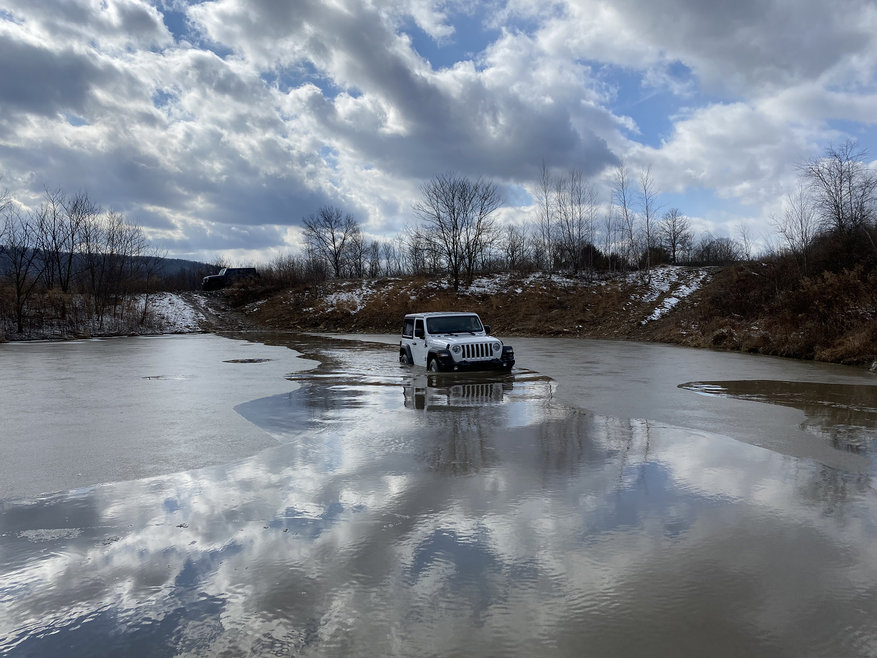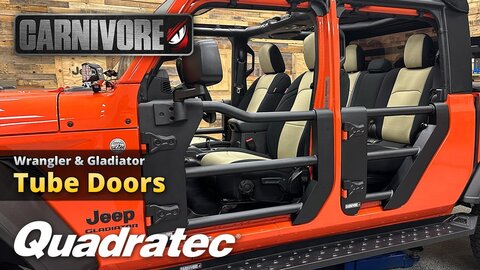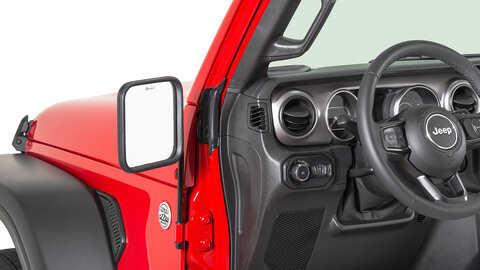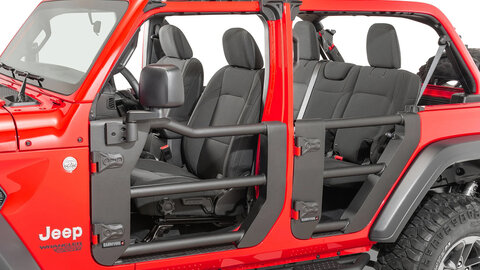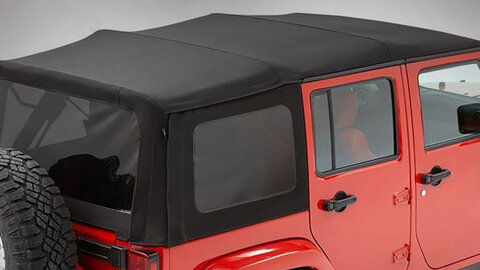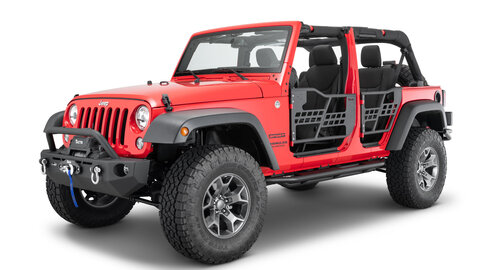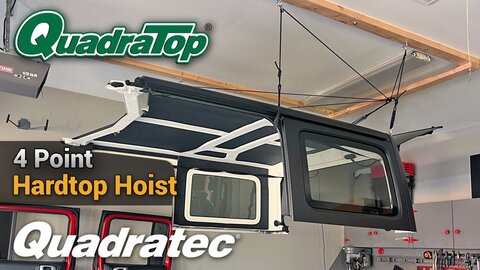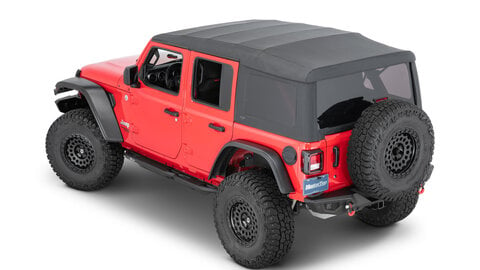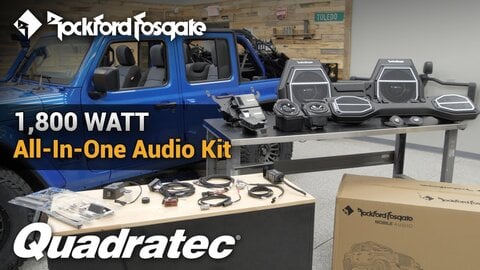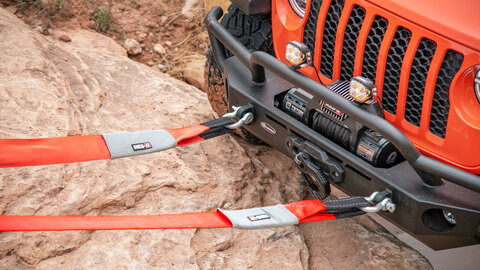by Kyle Buchter
Quadratec Trail Boss
Off-road drivers are usually broken down into those who like water and those who do not. We have all seen both types and there is nothing wrong with either. However, there usually comes a time on the trail when the vehicle needs to pass through water so it can be important to understand how to do it safely.
Now, there are a lot of theories of what is best when it comes to water fording, but realistically most drivers rely simply on luck. So we are going to discuss some safe techniques for the vehicle and environment when it comes to effective water fording.
One of the top questions is how deep can you go? Well, this really depends on your vehicle and it is always best to refer to the owner's manual to see the recommended water fording depth. For example, the Jeep Wrangler JL has a 30-inch water fording depth at five miles per hour.
Why could that be an issue?

Well, water in the engine will cause it to hydro-lock and that can be an expensive fix. Older cast iron blocks were a little more resilient to this and could sometimes be saved by pulling spark plugs and pushing the water out, but newer engines do not seem as tough and tend to blow easier when water enters. So, knowing where the air intake is located, as well as all the holes and openings, is very important. Also, when your vehicle needs to cross through water, you should always stay at least a few inches below the air intake to allow for depth changes.
Besides the engine, a Jeep has other spots that can be harmed by water — including differentials, transmission, transfer case and basically anything lubricated by oil. Water contamination will cause any of those listed to fail; some could be instantaneous and some prolonged.
Another theory that misleads drivers in certain situations is the bow wave technique. Basically, this means hitting on the accelerator once the Jeep is in the water. Does this work? Well, it depends on the situation.
If you know the depth and what the bottom terrain is like, then it can work. By doing this, the front body and bumper pushes water out and around the vehicle, creating a small air pocket inside the engine. This can work for a short distance. However, the principal rule still applies — keep the wave below fording depth.
The newer the vehicle, the more electronics they will possess. And all of those electrical connectors are vulnerable to water. Should water get in, then it can short the connection and cause the vehicle not to run and drive.
This is actually somewhat common on electric sway bar disconnects located directly behind the bumper which is below water fording level.
Driving aggressively through water and spraying it around may make for an interesting social media post, but hitting the water with speed to get that big splash and muddy water can be dangerous to your vehicle.
When you hit a puddle with speed, the water goes everywhere including up into the engine compartment. This lets the water into the air intake, but also into the pulleys and idlers and these will fail when you are on vacation or going to work. The pulley can also lock up and tear the serpentine belt off leaving you stranded.
This is all caused by dirt in the water getting into the bearings. I have seen Jeeps blow engines in only three inches of water because a driver hit it too fast.

To mitigate water issues, accessories like intake snorkels and breather relocators can help. A snorkel allows the air intake to sit higher to prevent water protrusion. However, while it does help by providing clean fresh air, some drivers get a false sense of security.
If sealed properly and the drain plug is closed, a snorkel can prevent water from entering the airbox at deeper depths. But, it does not raise any of the other vulnerable spots that water can attack.
Breather relocators for the transmission, transfer case and axles allow the same. It brings them higher to prevent contamination, but does not allow windshield deep fording.
Let’s face it, unless you have a vintage vehicle with a carburetor and no engine electronics, these components are all still vulnerable.

Additionally, if there is ice in the water please use extra caution. Ice does a lot of damage to plastic and even body panels. It is a hard solid object that does not care about anything on your vehicle. At the very least, it can tear lines and damage paint.

When water fording, always adhere to Tread Lightly principles. This means do not drive up or down a waterway. Instead, find the shortest and firmest way across. Also, avoid spinning tires as this can tear up the stream bed and cause harm to the natural ecosystem. It adds sediment to the water, destroys animal habitats, kills aquatic life and changes the water flow as a few examples. Keep the waves small to prevent surface nests and shore animals safe.
If your vehicle was in another area off-roading, it could spread invasive species of plants and animals. So, rinsing off your vehicle between off-road areas is certainly a good habit to get into for your vehicle and the environment.
If there is a strong current, you may need to cross at an angle to break up the water push, while allowing the current to help line you up correctly for an exit.
Oil and other fluid contaminants can harm everything in a waterway. If your vehicle has fluid leaks, oil undercoating, or greasy parts, it can contaminate water.
Overall, the safest thing for your vehicle and the environment is to proceed slowly and stay at a safe depth. Remember to not drive aggressively, avoid spinning tires and keep the waves to a minimum.
Related Articles:
How To Enjoy Jeep Winter Driving












